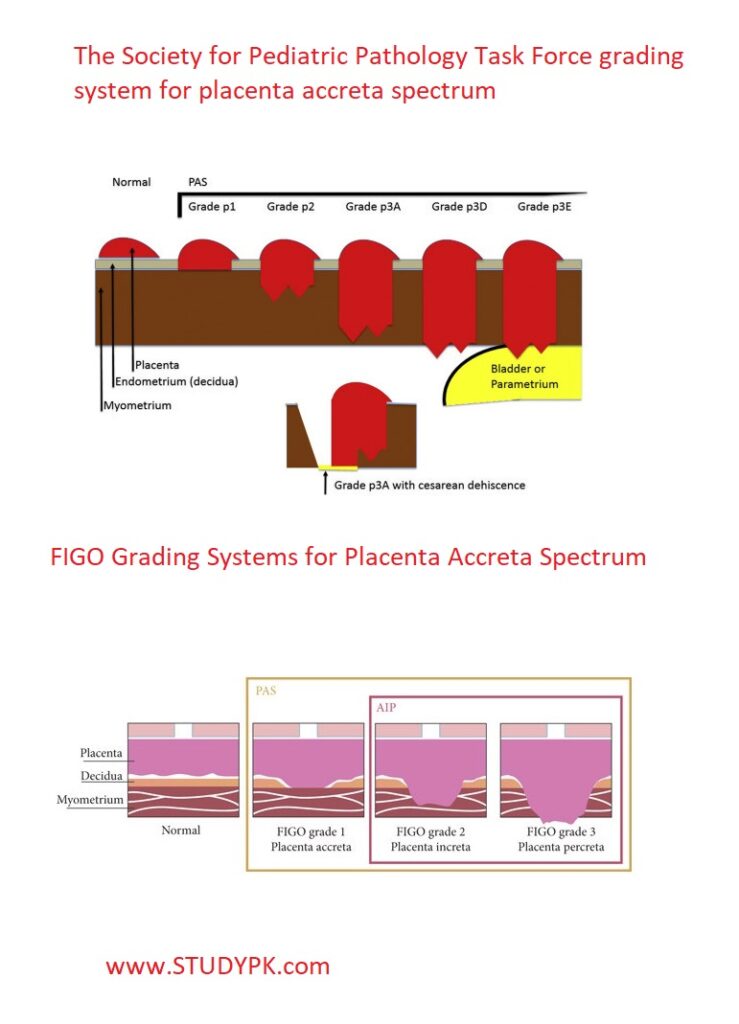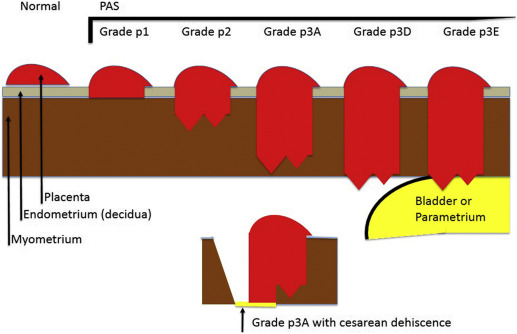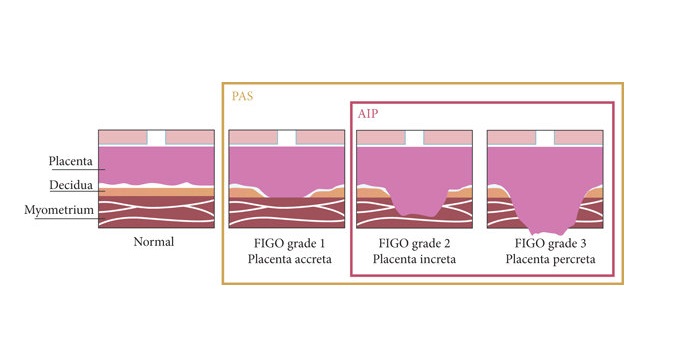SPP and FIGO Grading Systems for Placenta Accreta Spectrum

What is placenta accreta spectrum?
Placenta accreta spectrum (PAS) is a condition in which the placenta abnormally adheres to the uterine wall. This can make it difficult or impossible to deliver the placenta after the baby is born, and can lead to serious bleeding.
What are the risk factors for PAS?
The risk factors for PAS include:
- Previous cesarean delivery
- Placenta previa (the placenta covers the cervix)
- Uterine surgery
- In vitro fertilization (IVF)
- Multiple gestation
- Maternal age >35
How is PAS diagnosed?
PAS is typically diagnosed during pregnancy with ultrasound or magnetic resonance imaging (MRI). Ultrasound can show how deeply the placenta is attached to the uterine wall, and MRI can provide more detailed images of the placenta and surrounding structures.
How is PAS treated?
The treatment for PAS depends on the severity of the condition. In mild cases, it may be possible to deliver the placenta vaginally with careful monitoring. However, in more severe cases, a hysterectomy (removal of the uterus) may be necessary.
What are the complications of PAS?
The complications of PAS can include:
- Heavy bleeding
- Infection
- Blood clots
- Damage to surrounding organs
- Death
What is the prognosis for women with PAS?
With early diagnosis and appropriate treatment, most women with PAS can have a safe delivery and a good outcome. However, the risk of complications is higher in women with more severe cases of PAS.
What are the latest advances in the treatment of PAS?
There are a number of new treatment options for PAS being studied, including:
- Targeted therapy to block the growth of placental villi
- Use of ultrasound to guide the removal of the placenta
- Development of new surgical techniques
These new treatment options offer hope for women with PAS, and may help to improve their outcomes.
Pathologic grading of PAS
The Society for Pediatric Pathology (SPP) and the International Federation of Gynecology and Obstetrics (FIGO) have both developed grading systems for placenta accreta spectrum (PAS).
The SPP grading system is based on the depth of invasion of the placental villi into the uterine wall. It is as follows:
- Grade 0: Placenta accreta (creta or adherenta)
- Chorionic villi attach to the myometrium, rather than being restricted within the decidua basalis.
- Grade 1: Placenta increta
- Chorionic villi invade into the myometrium.
- Grade 2: Placenta percreta
- Chorionic villi invade through the myometrium and into adjacent structures, such as the bladder or bowel.
- Grade 3A: Placenta increta with disruption of the uterine serosa
- Chorionic villi invade into the myometrium and disrupt the uterine serosa.
- Grade 3E: Placenta percreta with invasion of adjacent organs
- Chorionic villi invade through the myometrium and into adjacent structures, such as the bladder or bowel.

The FIGO classification system divides PAS into three grades:
- Grade 1: Placenta accreta. The placenta attaches to the myometrium, but there is no invasion of the muscle wall.
- Grade 2: Placenta increta. The placenta invades the myometrium, but there is no invasion of other organs or tissues.
- Grade 3: Placenta percreta. The placenta invades other organs or tissues, such as the bladder, bowel, or major blood vessels.
Grade 3 PAS is further divided into three categories based on the location of invasion:
- Grade 3A: Invasion limited by the uterine serosa.
- Grade 3B: Invasion of the urinary bladder.
- Grade 3C: Invasion of other pelvic tissues/organs.
The FIGO classification system also includes a category for placenta percreta previa, which is a rare condition in which the placenta invades through the uterine wall and into the cervix.

The SPP grading system is more precise than the FIGO grading system, and it is better able to predict the risk of complications and the need for hysterectomy. However, the FIGO grading system is more widely used in clinical practice.
Leave a Reply